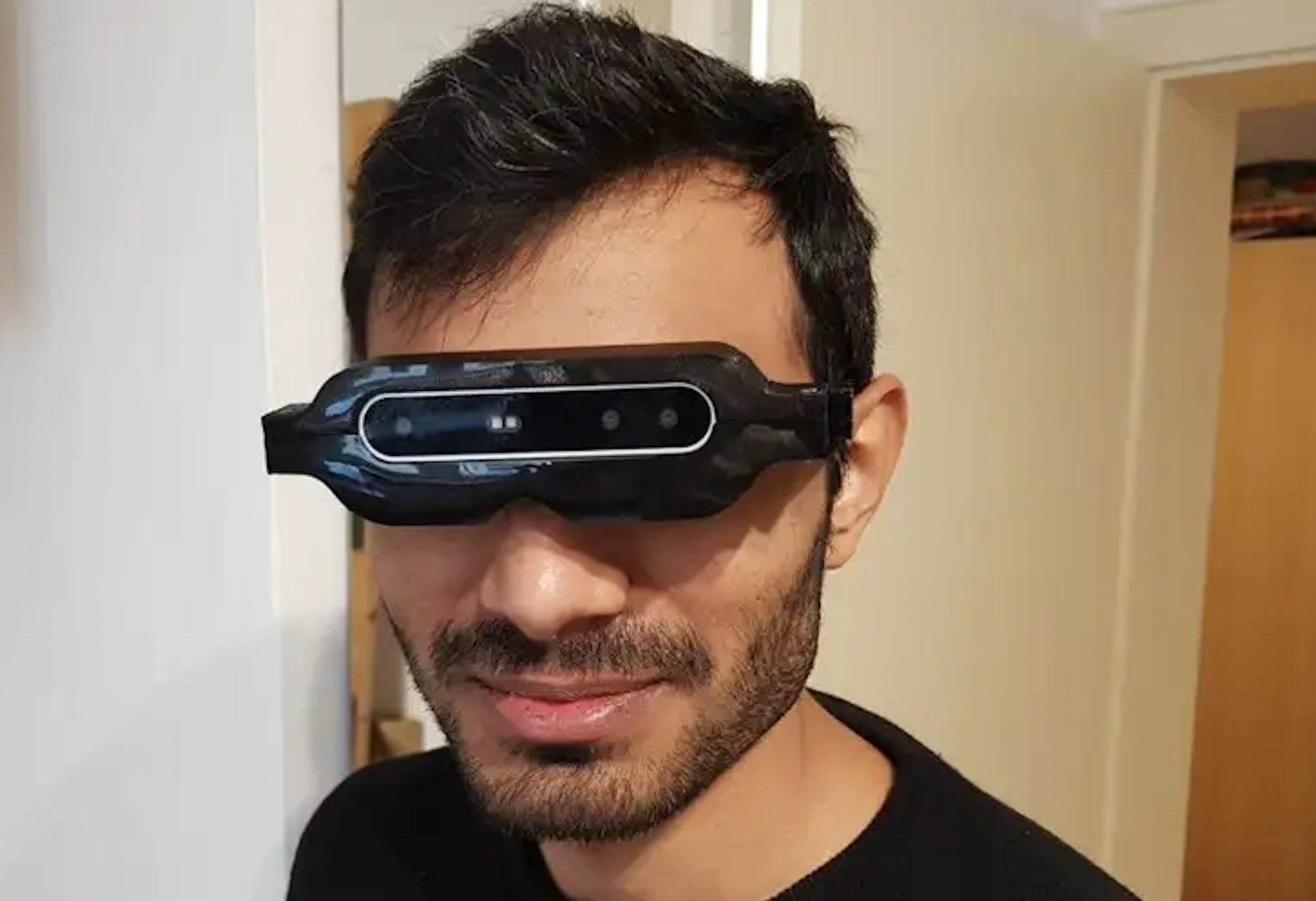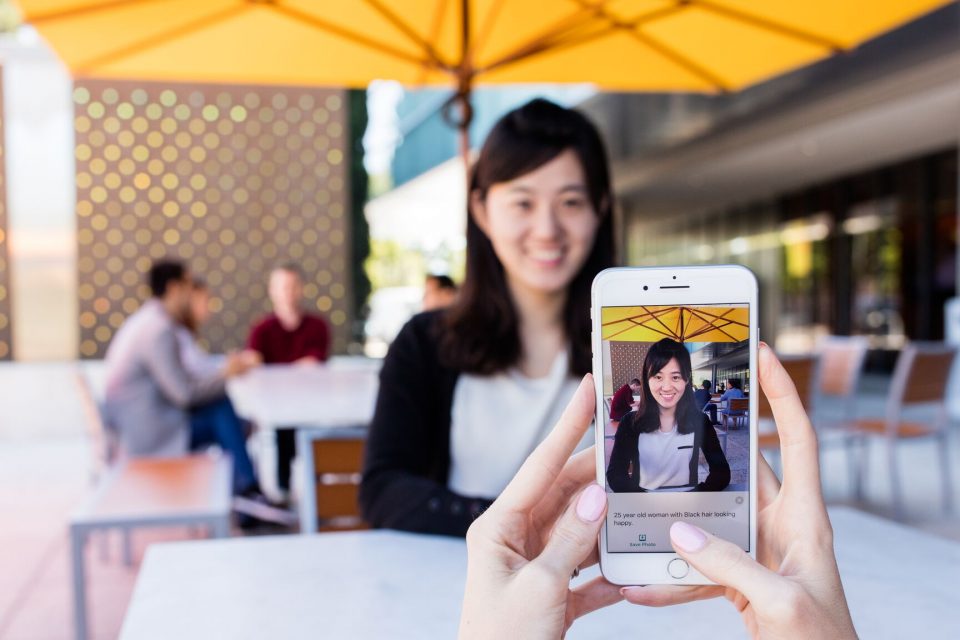Wearable Technology for Low Vision: A Breakthrough in Accessibility
Wearable Technology for Low Vision: A Breakthrough in Accessibility
Blog Article
Empowering Freedom With Assistive Modern Technology for the Blind
The combination of assistive technology right into the lives of people with visual impairments stands for a considerable improvement in advertising self-reliance and self-sufficiency. From cutting-edge display viewers to sophisticated smart walking canes, these tools not only enhance everyday navigation and interaction but additionally equip individuals to involve meaningfully in numerous elements of life. As we discover the myriad benefits and real-world applications of these technologies, it ends up being essential to take a look at the hidden aspects that add to their performance and the possibility for future advancements in this crucial area.
Overview of Assistive Modern Technology

The advancement of assistive innovation is based in concepts of inclusivity and empowerment. Developments in software application, equipment, and sensory improvements give individuals with alternatives customized to their certain requirements. From display viewers that transform message to speech, to tactile devices that convey information through touch, these devices change the means people engage with their surroundings.
In addition to sensible applications, assistive technology cultivates better social incorporation and engagement in various sectors, including education and learning and work (OCR devices for the blind). As r & d remain to progress, the capacity for assistive innovation to additionally improve the lives of visually damaged people continues to be appealing, leading the way for an extra equitable culture where everyone can thrive
Kinds of Assistive Tools
A variety of assistive gadgets have arised to support people with aesthetic disabilities, each developed to meet details needs and enhance day-to-day functioning. These devices range from low-tech services to sophisticated advancements, supplying diverse alternatives for users.
Low-tech gadgets include magnifiers and large-print products that aid in reading and writing. Braille devices, such as Braille slates and stylus pens, allow responsive reading and communication. Alignment and wheelchair help, like white walking canes, assist users navigate their atmosphere securely.
On the higher end of the spectrum, electronic zoom systems and screen visitors use substantial support. Digital magnifiers allow individuals to expand message and pictures on displays, while screen visitors convert digital web content into synthesized speech, helping with accessibility to details on smart devices and computer systems.
Smartphone applications also play an essential function, offering functions like message recognition and navigating assistance. Wearable innovation, such as wise glasses outfitted with augmented truth, is arising as a promising tool to improve situational understanding.
Advantages of Assistive Modern Technology
The integration of assistive innovation substantially boosts the high quality of life for individuals with visual problems. These technologies encourage customers by promoting independence, allowing them to browse their environments extra properly and do day-to-day jobs with better convenience. As an example, display visitors and magnification software application allow individuals to accessibility digital information, cultivating academic and professional chances that may have previously been out of reach.
Furthermore, assistive tools such as clever canes and GPS applications offer real-time navigating aid, improving flexibility and safety and security. This raised freedom not just boosts self-confidence but also encourages social interaction, enabling users to take part more totally in their areas.
Assistive technology also facilitates interaction, assisting customers get in touch with others through voice acknowledgment and text-to-speech applications. This capacity is essential for preserving connections and accessing essential info.
Furthermore, the customization choices readily available with lots of assistive innovations make sure that users can customize devices to their certain requirements, even more enhancing use and effectiveness. Overall, the advantages of assistive innovation for individuals with aesthetic impairments are profound, promoting a more comprehensive society where every person can pursue their objectives and ambitions.
Study and Success Stories
Highlighting the transformative influence of assistive technology, various instance studies show how people with aesthetic impairments have actually effectively incorporated these tools right into their day-to-days live. One compelling example includes an university student who utilized screen analysis software program to navigate academic products and on the internet resources properly. This technology not only promoted her education however also boosted her confidence in joining discussions and group projects.
One more instance research study features an expert who employs a mobile phone application made for navigation and things acknowledgment. By utilizing this app, he has regained freedom in both his individual and workplace, allowing him to commute separately and engage with associates better.
In addition, a retired browse around this site person shared her experience with braille e-readers, which enabled her to access a substantial selection of literature and stay linked with her community via publication clubs.
These success stories highlight the essential function of assistive innovation in fostering independence, improving top quality of life, and promoting social combination for individuals with aesthetic disabilities (AI-powered visual aids). By accepting these innovative devices, users can overcome difficulties and take possibilities that add to their specialist and individual satisfaction

Future Trends in Assistive Technology
Technology in assistive technology is positioned to redefine the landscape of assistance for people with visual problems. Arising fads emphasize the assimilation of fabricated knowledge (AI) and artificial intelligence, see here which boost the capability of devices that help with navigating and information ease of access. As an example, AI-driven applications are currently with the ability of translating aesthetic information in real-time, enabling individuals to involve with their setting a lot more separately.
Furthermore, the development of wearable technology is advancing quickly. Smart glasses equipped with enhanced fact (AR) can supply audio descriptions of surroundings, changing just how customers communicate with public areas. These tools not just promote autonomy yet also foster social incorporation.
Additionally, the Internet of Things (IoT) is making homes smarter, permitting for smooth connectivity between daily home appliances and assistive gadgets. This connection encourages individuals by making it possible for automatic actions and voice-activated controls customized to specific requirements.
Conclusion
To conclude, assistive innovation plays a critical function in equipping individuals with aesthetic disabilities by boosting their self-reliance and engagement with their surroundings. The diverse array of gadgets and applications offered not just promotes navigating and interaction however also advertises social combination and possibilities for professional and individual growth. As improvements continue in this field, the possibility for YOURURL.com improving the high quality of life for those with aesthetic problems will expand, fostering higher freedom and empowerment.

Report this page